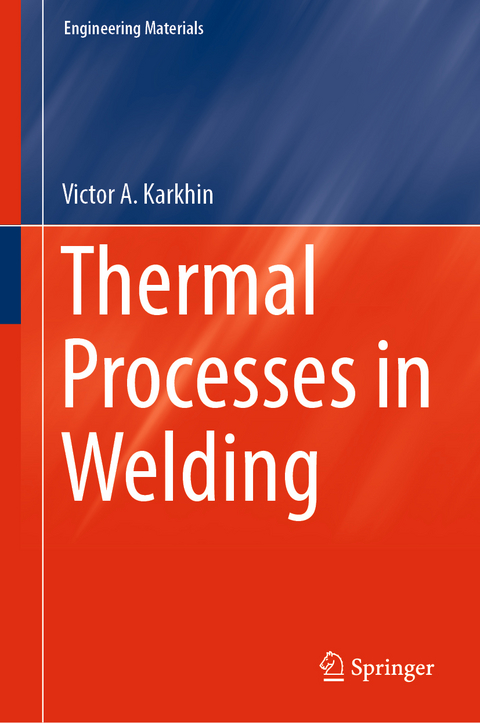
Thermal Processes in Welding
Springer Verlag, Singapore
978-981-13-5964-4 (ISBN)
The book is divided into 13 chapters. Chapter 1 briefly reviews various welding processes and the energy characteristics of welding heat sources, while Chapter 2 covers the main thermophysical properties of the most commonly used alloys. Chapter 3 describes the physical fundamentals of heat conduction during welding, and Chapter 4 introduces several useful methods for solving the problem of heat conduction in welding. Chapters 5 and 6 focus on the derivation of analytical solutions for many types of heat sources in semi-infinite bodies, thick plane layers, thin plates and cylinders under various boundary conditions. The heat sources can be instantaneous or continuous, stationary or moving, concentrated or distributed (1D, 2D or 3D). In Chapter 7 the temperature field under programmed heat input (pulsed power sources and weaving sources) is analyzed.
In turn, Chapters 8 and 9 cover the thermal cycle, melting and solidification of the base metal. Heating and melting of filler metal are considered in Chapter 10. Chapter 11 addresses the formulation and solution of inverse heat conduction problems using zero-, first- and second-order algorithms, while Chapter 12 focuses on applying the solutions developed here to the optimization of welding conditions. In addition, case studies confirm the usefulness and feasibility of the respective solutions. Lastly, Chapter 13 demonstrates the prediction of local microstructure and mechanical properties of welded joint metals, while taking into account their thermal cycle.
The book is intended for all researches, welding engineers, mechanical design engineers, research engineers and postgraduate students who deal with problems such as microstructure modeling of welds, analysis of the mechanical properties of welded metals, weldability, residual stresses and distortions, optimization of welding and allied processes (prewelding heating, cladding, thermal cutting, additive technologies, etc.). It also offers a useful reference guide for software engineers who are interested in writing application software for simulating welding processes, microstructure modeling, residual stress analysis of welds, and for robotic-welding control systems.
Victor A. KARKHIN is a Professor at the Department of Welding and Laser Technologies, Peter the Great St. Petersburg Polytechnic University, Russia as well as an Honorary Doctor of Lappeenranta University of Technology, Finland. Has published more than 300 research and educational papers on the theory of welding processes, strength of welded structures, theory of welding stresses and distortion, mathematical modeling and optimization of technological processes. Has been a lecturer at various universities in the USSR, Germany, Norway and Finland. He is a Commission member of the International Institute of Welding and the International Organization for Standardization. His article “Inverse Modelling of Fusion Welding Processes” was awarded the Kenneth Easterling Best Paper Award by the International Institute of Welding.
Energy characteristics of welding heat sources.- Thermal properties of metals.- Physical fundamentals of heat transfer during welding.- Methods for solving problems of heat conduction in welding.- Temperature fields in fusion welding.- Temperature fields in pressure welding.- Temperature fields with a programmable input of heat.- Metal heat cycles during welding.- The melting and solidification of the base metal.- Heating and melting the filler metal.- Inverse heat conduction problem in welding.- Optimization of welding.- Microstructure and mechanical properties of the metal Prediction different zones weld thermal cycles in view.
| Erscheinungsdatum | 30.05.2019 |
|---|---|
| Reihe/Serie | Engineering Materials |
| Zusatzinfo | 284 Illustrations, black and white; XIX, 478 p. 284 illus. |
| Verlagsort | Singapore |
| Sprache | englisch |
| Maße | 155 x 235 mm |
| Themenwelt | Naturwissenschaften ► Physik / Astronomie ► Thermodynamik |
| Technik ► Maschinenbau | |
| Schlagworte | fusion welding processes • heat sources in a cylinder • heat sources in a plane layer • heat sources in a semi-infinite body • microstructure prdeiction • moving heat sources • pulsed power sources • Rosenthal and Rykalin • weaving sources |
| ISBN-10 | 981-13-5964-4 / 9811359644 |
| ISBN-13 | 978-981-13-5964-4 / 9789811359644 |
| Zustand | Neuware |
| Haben Sie eine Frage zum Produkt? |
aus dem Bereich


